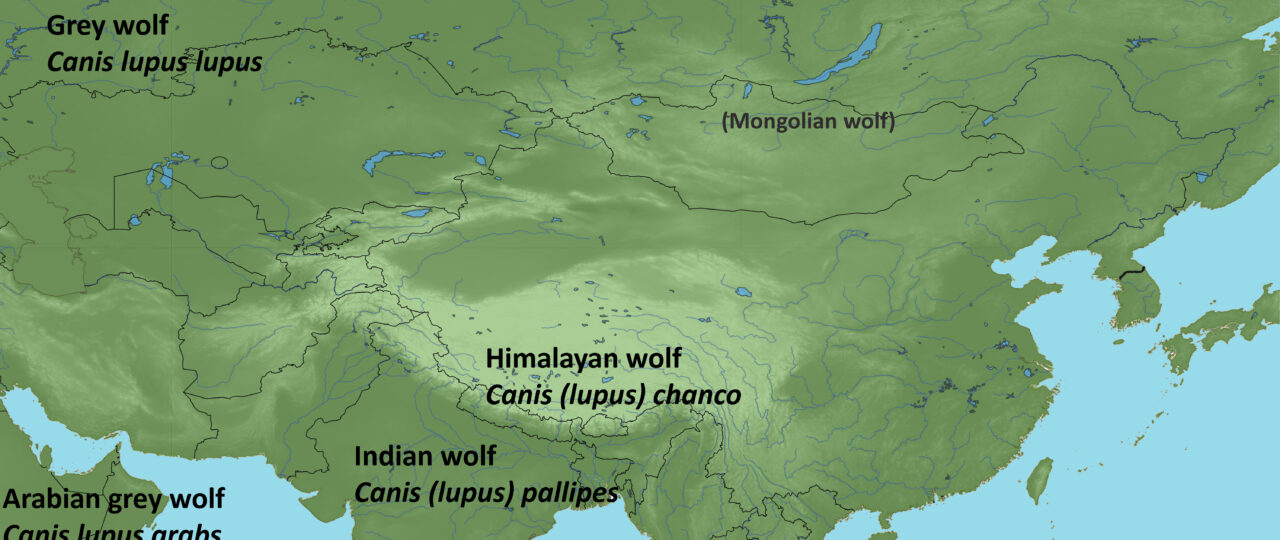New Paper out: Review of Asian wolves
We are happy to announce our review paper on wolves in Asia has been published in Frontiers in Ecology and Evolution. Find the full article here.
Wolves in Asia have been comparably little studied but merit more attention from science and conservation. This study led by WildCRU researcher Geraldine Werhahn with Dr. Helen Senn from RZSS WildGenes and WildCRU’s leading canid experts Professor David Macdonald and Professor Claudio Sillero-Zubiri summarizes the available science to date to inform and advance taxonomy and conservation decisions.
Taxa belonging to the Genus Canis can challenge taxonomists because species boundaries and distribution ranges are often gradual. This is due to wolf specific characteristics such as large territories, long dispersal distances, and disposition to hybridize if same species mates are lacking. Species delineation within the taxonomic group of Canis is currently not based on consistent criteria, and is hampered by geographical bias and lack of taxonomic research. However, a consistent taxonomy is critical, given its importance for assigning legal protection, conservation priorities, and financial resources. The team carried out a qualitative review of the major wolf lineages identified from Asia from historical to contemporary time and considered relevant morphological, ecological, and genetic evidence. They present full mitochondrial phylogenies and genetic distances between these lineages. The team finds support for the presence and taxon eligibility of Holarctic grey, Himalayan/Tibetan, Indian, and Arabian wolves in Asia and recommends their recognition at the taxonomic levels consistent within the canid group. The team envisions that with this review the overdue taxonomic decisions and conservation actions for wolves in Asia can be advanced as well as more research in the region sparked.
